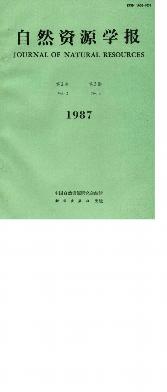Special Column:Celebration of the 70th Anniversary of IGSNRR, CAS
Ou Yuxiong
The total area of freshwater bodies in Jiangsu province is about 1733 thousand ha. including all types of rivers, reservois, pools and lakes. Taking the amount of water resources, its nature and prospects into account, it seems that the larger and middle-sized lakes ought to be the main part of exploitation in the coming days.In this paper the existing state of larger and middle-sized lakes in Jiangsu province has been discussed. It shows that there is still keen contradiction of larger in resources, great in potential benefit and poor in produtivity. The drawbacks are not only the poor yield but also (1) low-level of primary productivity of the lakes. At present, the natural baits still form the main base of aquatic produts. (2) single-product management. (3) environmental quality goes to the worse.In order to improve production level thoroughly and greatly, the pattern "Water-body Agriculture" was suggested."Water-body Agriculture" means that integrated-agriculture is developped in lakes relying on new technics. This is a new field of scientific research and production. And it combines organically the traditional fishery with modern agriculture, so that the directional exploitation of resources could be accomplished.The theoretical principle of water-body agriculture is to improve the efficiency of solat energy in lakes. In this pattern the function of aquatic plants is stressed. The aim is to use the natural resources of water, soil, space and light more efficiently, increase the primary productivity fundamentally, and set up a material base for the use of resources. In a sense, the water-body agriculture is a "Green revolution".The water-body agriculture is trying to seek a route reaching the "lake self-providing", breeding promoting by planting, prospering both fishery and farming, diversified economy on large water area. The terminus is to turn a lot of large and middle-sized lakes into integrated modernly non-staple food product base with better ecological environment.The paper summarized progress of experiment in water-body agriculture, which has been doing since 1980. About 60-90% of waves have been effaced from the plant effacing wave belt. The maximum output of water chetnut is 10687.5 kg/ha. Gorgon euryale is 3101 kg/ha. Net output of fish feeding with fishnet in large area reached 31050 kg/ha.In order to obtain a stereo-exploitation on surface layer of water body, land plant and algae are culturing in lakes without soil and obtain a good beginning. It shows that the experiment of water-body agriculture has developped a good prospects about production of lakes.Finally, some notable problems about the exploitation and use of fresh water resources in Jiangsu province were discussed.
